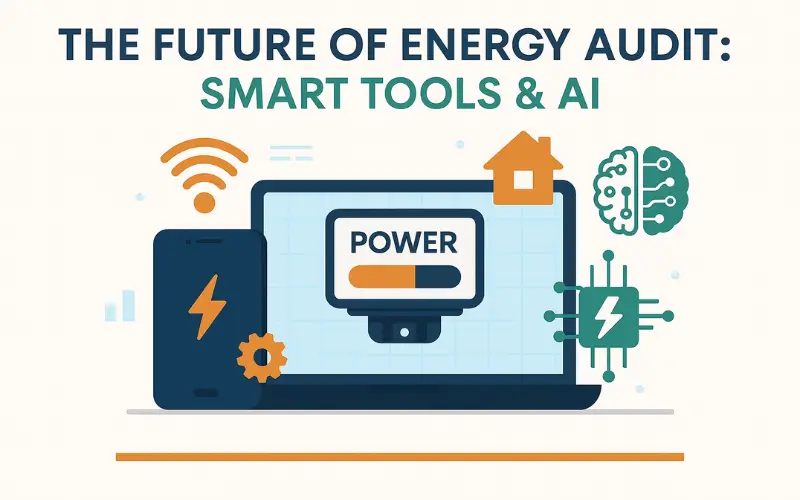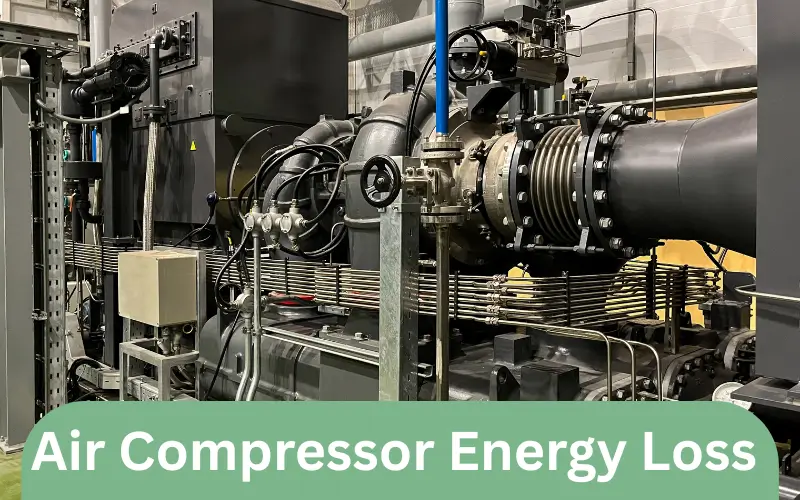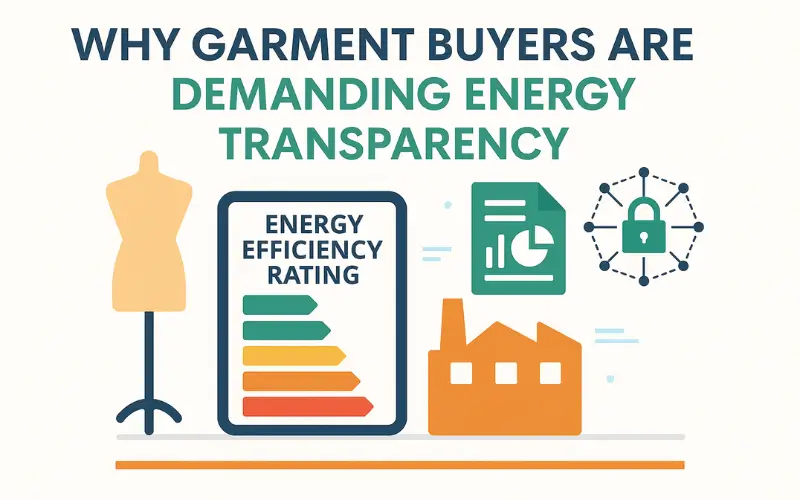In a world where every kilowatt-hour counts, energy audits have become an essential tool for reducing costs, improving efficiency, and meeting sustainability goals. But the game has changed. What used to be a clipboard-and-stopwatch process is now evolving into a highly intelligent, data-driven operation powered by smart tools and artificial intelligence (AI).
From IoT sensors that collect real-time consumption data to AI algorithms that detect hidden inefficiencies, modern energy audits go far beyond simply identifying waste. They offer actionable insights, predictive maintenance capabilities, and even automated optimization—helping buildings, factories, and homes operate at peak performance.
In this article, we’ll explore the latest generation of smart energy audit tools and how AI is shaping the future of energy management. You’ll discover the technologies behind these innovations, the platforms leading the charge, and the challenges to consider before adoption. Whether you’re a facility manager, sustainability officer, or simply an energy-conscious homeowner, this deep dive will help you understand how to take advantage of these transformative tools.
Understanding Modern Energy Audits
The Evolution from Traditional to Smart Energy Audits
For decades, energy audits followed a relatively manual process. Auditors would walk through a building with measuring devices, such as infrared thermometers, power meters, and flow gauges, to identify sources of energy loss. These methods were effective at the time, but they relied heavily on spot checks, manual data entry, and assumptions based on limited measurements.
The shift began when digital meters, building automation systems, and computer modeling entered the field, allowing for more detailed and faster assessments. But the real transformation came with the rise of IoT (Internet of Things) devices and AI-driven analytics. Today’s “smart” energy audits can measure hundreds of parameters simultaneously, feeding continuous streams of data into algorithms that identify inefficiencies, forecast energy needs, and even recommend corrective actions in real time.
Defining “Smart” and AI-Powered Audits
A smart energy audit uses connected devices, cloud computing, and AI to gather, process, and analyze building energy data at a depth and speed impossible for humans alone. These systems typically include:
- IoT Sensors – Small, wireless devices placed throughout a building to monitor lighting, HVAC, appliances, and more.
- Real-Time Data Capture – Instead of monthly or quarterly energy bills, auditors can see second-by-second consumption patterns.
- AI & Machine Learning Models – Algorithms trained to detect unusual patterns, predict future energy use, and suggest the most effective efficiency upgrades.
- Digital Twins – Virtual replicas of a building that allow simulation of different efficiency scenarios before making real-world changes.
- Non-Intrusive Load Monitoring (NILM) – AI techniques that disaggregate whole-building data to identify which specific devices are consuming energy without needing individual plug meters.
By combining these technologies, smart audits transform what used to be a reactive process—finding waste after it occurs—into a proactive system that prevents energy loss before it happens.
Key Smart Energy Audit Tools and Platforms
Smart energy audit solutions come in many forms, from IoT sensor networks to AI-driven analytics dashboards. Below is a breakdown of some of the most notable tools, platforms, and technologies shaping the industry today.
IoT Sensor-Based Platforms
1. Euditor (AI Energy Audit Technology Ltd.)
- A plug-and-play system combining smart plugs, cloud data storage, and AI analytics.
- Captures detailed appliance-level consumption without manual meter readings.
- Best suited for small to medium-sized buildings looking for quick deployment.
2. Energy Audit AI
- Circuit-level monitoring using advanced sensors and digital twins.
- AI models forecast usage, detect anomalies, and suggest energy-saving actions.
- Real-time insights available through a mobile or web dashboard.
- AI & ML-Driven Analytics Platforms
3. Verdigris Technologies
- AI sensors installed on electrical panels to measure load and detect inefficiencies.
- Uses deep learning to predict energy trends and maintenance needs.
- Widely used in commercial buildings for demand forecasting and anomaly detection.
4. EnergyCAP
- SaaS-based energy and utility management software.
- Integrates interval data, cost tracking, and carbon footprint reporting.
- Offers AI-driven benchmarks to compare facilities and identify performance gaps.
- Building Retrofit & Performance Modeling Tools
5. AI4EF
- AI platform for planning retrofits, renewable integration, and PV system assessment.
- Designed for architects, engineers, and urban planners.
6. LuminLab
- Combines a predictive energy model with a chatbot assistant for interactive planning.
- Simulates “what-if” scenarios before committing to upgrades.
7. ECOCITIES
- Portfolio-level optimization tool for cities and building owners.
- Balances cost, carbon reduction, and operational efficiency.
8. Sefaira
- Focused on early-stage building design analysis.
- Models daylighting, HVAC loads, and energy use for architects.
9. RETScreen
- Government-supported tool for evaluating energy projects.
- Provides performance verification for renewable and efficiency upgrades.
- Home Energy Management Systems
10. EcoFlow Oasis
- AI assistant for homes that manages production (solar), storage (batteries), and consumption.
- Optimizes usage based on real-time electricity prices and weather forecasts.
- AI in Building System Controls
11. BrainBox AI’s ARIA
- AI-driven HVAC control that can cut energy use by up to 25%.
- Continuously learns building occupancy patterns and weather data for optimization.
These tools are not just monitoring systems—they are decision-making engines that can automate energy efficiency improvements and integrate with renewable energy systems.
Underlying Technologies & Research
While smart energy audit tools may look like polished apps or neat hardware devices, their power comes from the underlying technologies that collect, interpret, and act on data. Understanding these foundations helps explain why modern audits are so much more precise than their predecessors.
Anomaly Detection & Disaggregation
One of the most valuable capabilities in AI-powered audits is identifying unusual energy patterns before they turn into costly problems.
- Anomaly Detection – Machine learning models flag abnormal usage patterns that could indicate equipment faults, energy leaks, or human errors.
- Non-Intrusive Load Monitoring (NILM) – Instead of physically measuring each device, NILM algorithms break down whole-building electricity data into individual appliance usage profiles.
- Benefits: Faster fault detection, reduced maintenance costs, and improved equipment uptime.
Predictive Modeling
Modern audits don’t just analyze the past—they forecast the future.
- Machine Learning Forecasting – Predicts upcoming demand spikes, seasonal variations, and even the impact of weather patterns.
- Digital Twin Simulations – Creates a virtual replica of the building to test various energy efficiency scenarios without disrupting real operations.
- Benefits: Enables proactive energy management and long-term planning.
Visualization & Data Insights
Clear, intuitive dashboards make it possible for facility managers and homeowners to act on complex data.
- ENCOVIZ – An open-source platform for ingesting, cleaning, and visualizing building energy data in real time.
- Custom KPIs & Benchmarks – Helps compare performance across facilities or against industry standards.
- Benefits: Turns raw data into actionable insights for decision-makers at all levels.
Integration with Renewable Energy Systems
AI-enhanced audits increasingly factor in renewable energy generation and storage.
- Solar, wind, and battery storage data can be merged with consumption metrics.
- Smart scheduling ensures maximum use of self-generated power before drawing from the grid.
- Benefits: Lowers utility costs, increases energy independence, and reduces carbon footprint.
Industry Trends and Real-World Applications
Smart energy audit tools are no longer experimental—they’re already shaping how buildings, businesses, and homes manage their energy use. Below are some of the most notable trends and examples from different sectors.
Utility Sector Adoption of AI
Utilities are among the earliest adopters of AI in energy management.
- Predictive Maintenance – AI models analyze sensor data from transformers, substations, and grid components to forecast failures before they occur.
- Generative AI Assistants – Tools like “First Time Right Autopilot” help technicians troubleshoot faster by providing step-by-step repair guidance.
- Grid Modernization – AI assists in balancing renewable inputs, demand spikes, and storage systems for more stable energy delivery.
Commercial Real Estate and Sustainability
Large building portfolios are increasingly turning to AI-powered audits to meet sustainability goals and reduce costs.
- BrainBox AI’s ARIA – Deployed in office buildings and hotels worldwide, achieving up to 25% energy savings through AI-driven HVAC optimization.
- EnergyCAP and Verdigris – Used to benchmark performance across multiple sites, identify energy waste, and comply with ESG reporting requirements.
Residential Sector Front
Homeowners are beginning to access the same level of intelligence previously reserved for commercial facilities.
- EcoFlow Oasis – Acts as an AI home energy manager, controlling solar production, battery storage, and appliance scheduling.
- DIY NILM Solutions – Open-source projects and affordable smart plugs make device-level monitoring accessible without professional audits.
Public Sector and City-Scale Programs
Cities and governments are adopting portfolio-level smart audit systems to reduce public energy costs and meet climate commitments.
- Platforms like ECOCITIES model entire urban districts for efficiency gains.
- Smart street lighting, AI-controlled HVAC in public buildings, and renewable integration are becoming common.
Benefits of Smart & AI-Powered Energy Audits
Adopting smart tools and AI in energy audits goes beyond just finding inefficiencies—it transforms how buildings operate, budgets are managed, and sustainability targets are met.
1. Increased Data Granularity & Accuracy
Traditional audits often rely on snapshots of usage data—monthly bills or spot measurements. Smart audits, however, offer:
- Circuit-level insights with second-by-second monitoring.
- Device-specific tracking through NILM and IoT sensors.
- Elimination of manual errors in data recording.
This level of detail helps pinpoint the exact cause of inefficiencies, from an underperforming chiller to lights left on overnight.
2. Predictive Insights & Proactive Maintenance
Instead of reacting to issues after they cause energy waste or downtime, AI-powered audits allow:
- Failure Forecasting – Predict equipment breakdowns before they happen.
- Dynamic Scheduling – Adjust maintenance plans based on real-time performance.
- HVAC Optimization – Continuously fine-tunes heating and cooling systems to meet demand with minimal waste.
This reduces downtime, lowers repair costs, and extends equipment life.
3. Enhanced Reporting & Sustainability Tracking
Modern audits simplify compliance and ESG (Environmental, Social, and Governance) reporting.
- Automated Carbon Reporting – AI tools calculate and format emissions data for regulatory compliance.
- Benchmarking – Compare performance against similar facilities or industry standards.
- Sustainability Progress Tracking – Visual dashboards show year-over-year improvements.
4. Energy Cost Savings
By identifying inefficiencies and optimizing systems, businesses and homeowners can see significant reductions in utility bills—sometimes as high as 20–30% in the first year of implementation.
Challenges & Considerations
While the benefits of smart energy audit tools and AI are compelling, successful implementation requires overcoming certain technical, financial, and organizational hurdles.
1. Infrastructure & Data Quality Barriers
- Legacy Systems – Many older buildings lack the wiring, connectivity, or control systems needed for IoT sensor integration.
- Data Gaps & Inconsistencies – AI models need clean, complete datasets to function effectively, which can be difficult if energy records are incomplete or in different formats.
- Integration Complexity – Merging multiple data sources (utility bills, BMS systems, IoT devices) can require significant IT support.
2. Regulatory & Compliance Challenges
Lack of Unified Standards – Energy data metrics can vary across regions, making it difficult to benchmark performance consistently.
- Data Privacy & Security – Energy usage data can reveal occupancy patterns and operational schedules, raising cybersecurity concerns.
- Local Regulatory Hurdles – In some regions, restrictions on metering equipment or energy data sharing can slow adoption.
3. Technical Skill Requirements
- Training Needs – Facility managers and maintenance teams must understand AI dashboards and system recommendations.
- Vendor Dependence – Some platforms are proprietary, meaning switching providers can be costly and disruptive.
4. Financial Considerations
- Initial Investment – Hardware, installation, and software subscription costs can be high for small organizations.
- ROI Timeline – While energy savings can be significant, payback periods vary depending on building size, energy rates, and system complexity.
Future Outlook
The evolution of smart energy audits is just beginning. As AI, IoT, and renewable integration mature, the scope and impact of energy auditing will expand significantly.
1. Smart Grid Integration & Demand-Response
- Real-Time Grid Interaction – Buildings will automatically adjust consumption based on grid demand, helping to prevent blackouts and balance renewable supply.
- Dynamic Pricing Optimization – AI will shift high-energy tasks (e.g., HVAC pre-cooling, EV charging) to times when electricity is cheapest.
- Renewable Energy Trading – Owners may sell excess solar power to neighbors or the grid, coordinated by blockchain and AI systems.
2. Democratization of Audit Tools
- Accessible AI Platforms – Open-source and low-cost solutions will make sophisticated energy monitoring available to small businesses and homeowners.
- Plug-and-Play Devices – Future sensors will be even easier to install, requiring no specialized training.
- Mobile-First Energy Management – AI audit insights delivered directly to smartphones for real-time decision-making.
3. Towards Autonomous & Resilient Buildings
- Self-Optimizing Systems – Buildings will continuously fine-tune HVAC, lighting, and other systems without human intervention.
- Predictive Maintenance at Scale – Entire building portfolios will be monitored from a central AI hub.
- Carbon-Neutral Operations – Integration of renewables, storage, and AI optimization will make fully net-zero buildings commonplace.
In short, the future of energy audits is proactive, predictive, and autonomous—transforming them from a compliance task into a strategic tool for sustainability, cost savings, and operational resilience.
Conclusion & Call to Action
Smart energy audits powered by AI and connected technologies represent a fundamental shift in how we manage energy consumption and sustainability. These tools go beyond traditional methods by providing real-time insights, predictive maintenance, and automated optimization—helping buildings and homes save money, reduce carbon footprints, and operate more efficiently.
As energy challenges grow and regulations tighten, adopting smart audit technologies is no longer optional but essential for facility managers, building owners, and homeowners alike. Whether you’re just starting or looking to upgrade your existing systems, embracing AI-powered tools can position you at the forefront of the energy efficiency revolution.
Take the first step today: explore available smart audit platforms, start small with IoT sensors, or consult experts to pilot AI-driven energy management in your facility. The future of energy audits is here—are you ready to power your building smarter?
FAQs
What is a smart energy audit and how does it differ from traditional audits?
Smart audits use IoT sensors and AI to provide real-time, detailed energy data and predictive insights, whereas traditional audits rely on manual measurements and periodic data.
Can AI-powered tools detect specific devices without smart plugs?
Yes, through Non-Intrusive Load Monitoring (NILM), AI can analyze overall energy usage patterns and identify individual device consumption without installing meters on each device.
Are smart energy audit tools suitable for homeowners or mainly for commercial buildings?
While initially focused on commercial use, many tools are now affordable and user-friendly enough for homeowners and small businesses.
How accurate are AI energy predictions and anomaly detection?
Accuracy varies by platform and data quality but generally improves over time as AI models learn from more data, often achieving over 90% reliability in detecting inefficiencies.
What challenges exist when implementing AI energy audit tools?
Common challenges include integrating with legacy infrastructure, data privacy concerns, the need for skilled staff, and upfront costs.
How do these platforms integrate with renewable energy systems?
Many platforms combine consumption data with solar, wind, or battery storage information to optimize energy use and maximize renewable self-consumption.




